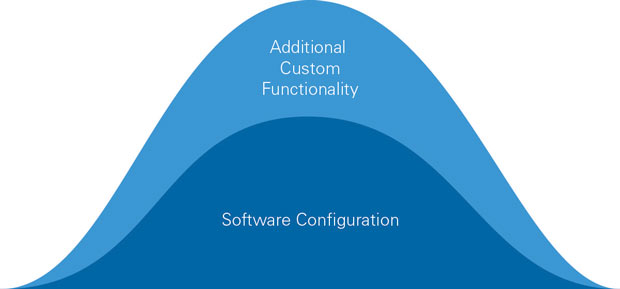Latest News
January 1, 2016
 By Michael Neal, National Instruments
By Michael Neal, National Instruments
We have entered the “Age of Data.” The amount of data being collected is growing at an explosive rate as companies rely more on data to make business decisions. Engineers require reliable, accurate and user-friendly data acquisition (DAQ) systems to meet this need. However, innovation in the data acquisition market has not kept pace with this unquenchable thirst for data. Data acquisition tools must evolve to better address the demands of the growing population of users who need data to inform their design decisions. These tools are lacking in two critical areas: providing simple yet flexible software and simplifying measurement system setup.
Today, users must choose between limited configuration software, which helps with basic data recording but cannot be modified to meet application requirements, or their own custom data acquisition applications that must be programmed from scratch. Hardware vendors provide software with the bare essentials for recording data from devices, but they push users to a different programming tool when they face challenges beyond the original software’s capabilities. This is an unnecessary trade-off; data acquisition software should evolve to span configuration and customization. In a 2013 National Instruments Global DAQ Value Research survey of 3,800 engineers, 27% identified that developing software for their application was the most time consuming part of their task, while 21% spent most of their time struggling with system setup.
 Figure 1: The majority of time on an application is spent on preparation instead of analyzing data to reach better decisions.
Figure 1: The majority of time on an application is spent on preparation instead of analyzing data to reach better decisions.Software Extremes
Engineers use two types of data acquisition software at opposite ends of the spectrum: the fixed-functionality configuration-based measurement software included with data acquisition devices and the custom software applications users code to control their devices. Fixed-functionality software is good for setting up a quick, simple measurement to configure basic settings like sampling rate. But custom software applications give users the power to program any functionality if they have the know-how and patience.
Users who want a typical data acquisition application for acquiring and saving data, with minor modifications like basic conditional logic, are forced to choose between these two extremes. As soon as their needs extend beyond the software that ships with their hardware, they must make the leap to the opposite extreme: a custom, programmed solution.
 Figure 2: In today’s market, engineers have to choose between using fixed functionality software or completely custom building their application.
Figure 2: In today’s market, engineers have to choose between using fixed functionality software or completely custom building their application.There is no reason that data acquisition software can’t evolve to better fill this gap. Software that offers a continuum from configurable measurements to customization through programming would increase efficiencies and remove the trade-off between ease -of-use via configuration and flexibility via programming.
 Figure 3: Software that bridges the gap between limited configuration and programmatic solutions can make engineers more efficient.
Figure 3: Software that bridges the gap between limited configuration and programmatic solutions can make engineers more efficient.System Setup Time Sink
When building a measurement system, setup is time-consuming, and an incorrect setup can introduce errors that may be hard to debug. Today, engineers can choose from a variety of systems featuring flexible, modular data acquisition hardware that they can adapt and reconfigure to meet changing I/O (input/output) and sampling needs. This is highly beneficial to users who face evolving system requirements, but the flexibility of the system complicates system setup.
Consider a device with a single function like a handheld device for measuring temperature. When using this device, the risk for error in setup is low. Conversely, a modular data acquisition system features a range of I/O options and provides many different measurement combinations. This flexibility helps lower total system cost since the same set of hardware can be adapted to serve a range of applications. But with that comes more configuration options that can complicate system setup.
Today, the software packaged with data acquisition devices does little to help users understand and document system connections such as wires between sensors. Better data acquisition software could reduce system setup complexity through improved system visualization, recommendations for correct wiring, and better checks for channel configuration.
Expect More
Data acquisition plays a critical role in driving innovation and discovery. Engineers rely on acquiring the right data to support design decisions, and advances in software could have a tremendous impact on improving their efficiency. To achieve this, data acquisition software must evolve to fill the gap between limited configuration software and flexible (but costly to build) custom programmatic solutions without increasing system setup complexity. To keep pace with the growing demand for data, it’s time to demand more from the software we use to acquire it.
This commentary is the opinion of Michael Neal, software product manager, National Instruments. You can send comments about this article via [email protected].
Subscribe to our FREE magazine, FREE email newsletters or both!
Latest News





